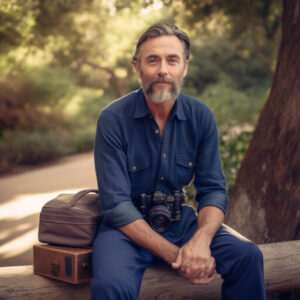Nikon D7200 Vs D500 For Wildlife: Which Dslr Reigns Supreme?
What To Know
- The D7200 is a great option for budget-conscious photographers who need a reliable camera with good image quality and autofocus performance.
- The D500, on the other hand, is the better choice for professional or advanced wildlife photographers who demand the best possible image quality, autofocus, and burst shooting capabilities.
- The D500 has a slight edge in terms of ISO performance, making it a better choice for low-light situations.
For wildlife photographers, choosing the right camera can make all the difference in capturing stunning images of elusive subjects. Two popular options from Nikon are the D7200 and D500. Both cameras offer impressive features, but they also have distinct advantages and disadvantages. In this blog post, we will compare the Nikon D7200 vs. D500 for wildlife photography, helping you make an informed decision about which camera is right for you.
Image Quality
Both the D7200 and D500 feature 24.2-megapixel sensors, providing excellent image quality. However, the D500 has a slight edge in terms of dynamic range, allowing for greater flexibility in post-processing. This is particularly important for wildlife photography, where capturing details in both bright and dark areas can be crucial.
Autofocus
Autofocus performance is critical for wildlife photography, as animals often move quickly and unpredictably. The D7200 has a 51-point autofocus system, while the D500 boasts a more advanced 153-point system. The D500’s autofocus is also faster and more accurate, especially in low-light conditions.
Burst Shooting
For capturing action-packed wildlife sequences, burst shooting capabilities are essential. The D7200 can shoot at up to 6 frames per second (fps), while the D500 can shoot at an impressive 10 fps. This makes the D500 the clear winner for wildlife photography that requires fast-paced shooting.
ISO Performance
High ISO performance is crucial for wildlife photography in low-light situations. Both the D7200 and D500 have excellent ISO performance, with the D500 having a slight advantage at higher ISOs. This allows you to capture sharper images in darker environments without introducing excessive noise.
Weather Sealing
For wildlife photographers who often work in harsh conditions, weather sealing is a must-have feature. The D7200 has weather sealing, but it is not as robust as the D500’s. The D500 is fully weather-sealed, providing superior protection against dust, moisture, and extreme temperatures.
Lens Compatibility
Both the D7200 and D500 are compatible with Nikon’s extensive range of F-mount lenses. However, the D500 has an additional advantage in that it is compatible with DX and FX lenses. This gives wildlife photographers more flexibility in choosing lenses to suit their specific needs.
Price
The D7200 is typically more affordable than the D500. However, the D500 offers a number of advanced features that may be worth the additional investment for serious wildlife photographers.
Recommendations
The Nikon D7200 and D500 are both excellent cameras for wildlife photography, but each has its own strengths and weaknesses. The D7200 is a great option for budget-conscious photographers who need a reliable camera with good image quality and autofocus performance. The D500, on the other hand, is the better choice for professional or advanced wildlife photographers who demand the best possible image quality, autofocus, and burst shooting capabilities.
Answers to Your Most Common Questions
Q: Which camera is better for low-light wildlife photography?
A: The D500 has a slight edge in terms of ISO performance, making it a better choice for low-light situations.
Q: Which camera has more autofocus points?
A: The D500 has a more advanced 153-point autofocus system compared to the D7200’s 51-point system.
Q: Which camera is more weather-resistant?
A: The D500 is fully weather-sealed, providing superior protection against dust, moisture, and extreme temperatures compared to the D7200’s partial weather sealing.
